Related Research Articles

Wooster Square is a neighborhood in the city of New Haven, Connecticut, to the east of downtown. The name refers to a park square located between Greene Street, Wooster Place, Chapel Street and Academy Street in the center of the neighborhood. Wooster Square is also known as Little Italy: a bastion of Italian American culture and cuisine, and is home to some of New Haven's, best-known pizza eateries, including Frank Pepe Pizzeria Napoletana and Sally's Apizza. The square and much of the neighborhood are included in the Wooster Square Historic District, which was listed on the National Register of Historic Places in 1971.

Fair Haven is a neighborhood in the eastern part of the city of New Haven, Connecticut, between the Mill and Quinnipiac rivers. The northeast section of the neighborhood is also known as Chatham Square.

The Bartlett Faculty of the Built Environment, also known as The Bartlett, is the academic centre for the study of the built environment at University College London (UCL), United Kingdom. It is home to thirteen departments that have expertise in individual subfields, including the Bartlett School of Architecture, Bartlett School of Planning, Bartlett Development Planning Unit, and the Centre for Advanced Spatial Analysis. The Bartlett is consistently ranked the highest in Europe and the UK and among the highest in the world for the "Architecture and the Built Environment" category in major rankings. It is currently ranked the first in the world for the year 2023.

The Eli Whitney Museum, in Hamden, Connecticut, is an experimental learning workshop for students, teachers, and families. The museum's main building is located on a portion of the Eli Whitney Gun Factory site, a gun factory erected by Eli Whitney in 1798. The museum focuses on teaching experiments that are the roots of design and invention, featuring hands-on building projects and exhibits on Whitney and A. C. Gilbert.

Connecticut Hall is a Georgian building on the Old Campus of Yale University. Completed in 1752, it was originally a student dormitory, a function it retained for 200 years. Part of the first floor became home to the Yale College Dean's Office after 1905, and the full building was converted to departmental offices in the mid-twentieth century. It is currently used by the Department of Philosophy, and its third story contains a room for meetings of the Yale Faculty of Arts & Sciences, the academic faculty of Yale College and the Graduate School.
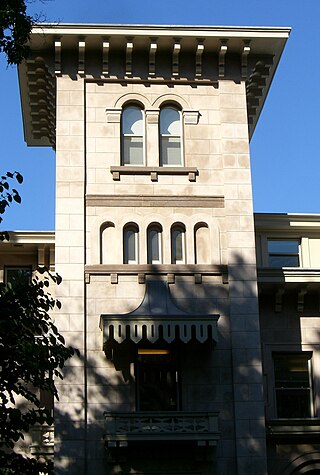
Henry Austin was a prominent and prolific American architect based in New Haven, Connecticut. He practiced for more than fifty years and designed many public buildings and homes primarily in the New Haven area. His most significant years of production seem to be the 1840s and 1850s.

Charles Coolidge Haight was an American architect who practiced in New York City. He designed most of the buildings at Columbia College's now-demolished old campus on Madison Avenue, and designed numerous buildings at Yale University, many of which have survived. He designed the master plan and many of the buildings on the campus of the General Theological Seminary in Chelsea, New York, most of which have survived. Haight's architectural drawings and photographs are held in the Dept. of Drawings and Archives at the Avery Architectural and Fine Arts Library at Columbia University in New York City.
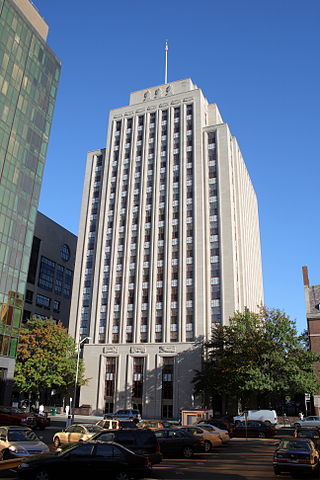
Douglas William Orr was an American architect based in New Haven, Connecticut.
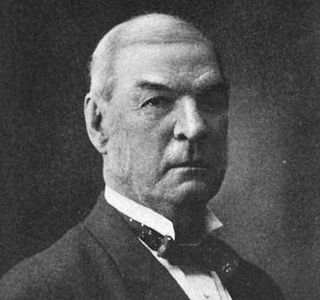
Nehemiah Day Sperry was an American educator and businessman who served as a U.S. Representative from Connecticut for eight consecutive terms from 1895 to 1911.

Whitneyville is a neighborhood in the southeastern portion of the town of Hamden, Connecticut. It started in the early nineteenth century as a factory town for workers in Eli Whitney's gun factory. Around the turn of the twentieth century, it evolved into a trolley suburb of New Haven. Today it is primarily residential, with a mixture of single-family homes and small apartment and condominium buildings. There is some commercial development centered around the intersection of Whitney and Putnam avenues.
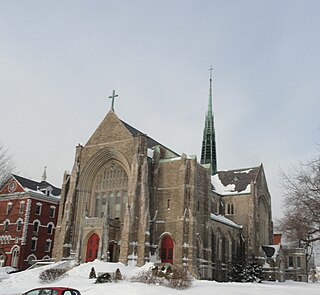
Timothy G. O’Connell (1868–1955) was an American architect whose Boston-based practice specialized in ecclesiastical design.
Elizabeth Mills Brown was a prominent American architectural historian, preservationist, and civic leader who lived in New Haven and Guilford, Connecticut.
Ezekiel Cheever School was a school located on Lombard St. in the Fair Haven neighborhood of New Haven, Connecticut, USA. The school opened in 1896 and remained as late as 1967. It was named for schoolteacher Ezekiel Cheever.

Leoni W. Robinson (1851-1923) was a leading architect in New Haven, Connecticut.
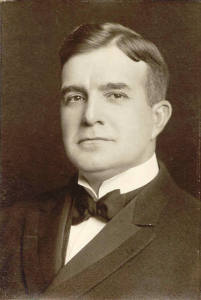
Frank J. Rice was a four-term Republican mayor of New Haven, Connecticut.. At 18 he went into the grocery business. And a few years after became the superintendent of H.P. Ives & Company. He was voted in as mayor in 1909, winning the race by 402 votes. He was a former member of the New Haven Councilmen. At one time in his life he was a trolley conductor in New Haven. He died midway through the first year of his fourth term as mayor.

Rufus G. Russell (1823-1896) was an architect working from New Haven, Connecticut.

Polak and Sullivan was an American architectural firm that was active between 1935 and 1975. The New Haven, Connecticut, based organization concentrated on work for Roman Catholic clients in Connecticut.
Dominique Berninger (1898–1949) was a French-born American architect based in Jenkintown, Pennsylvania, United States, who practiced nationally in the mid twentieth century but particularly in Pennsylvania. He is best known for his design of the French Pavilion for the New York World's Fair of 1939. Together with Louis Kahn, he founded the short-lived Architectural Research Group (ARG) in Philadelphia. He was a partner in the firms of Carswell, Berninger & Bower, Berninger & Bower (1935-1945) and Berninger, Haag & d'Entremont (1946)

Sidney Mason Stone was a prominent Connecticut architect and builder known for designs of churches, institutional buildings and residences. His creations incorporated Greek Revival, Romanesque, Gothic, Italianate and other styles popular in the 19th century. He served in several civic capacities in the city of New Haven and statewide and as mentor to Yale students prior to the establishment of that university's School of Architecture. He was the father of Harriet Mulford Stone, better known to readers of children's literature as Margaret Sidney, creator of the Five Little Peppers series.

Science Hill is an area of the Yale University campus primarily devoted to physical and biological sciences. It is located in the Prospect Hill neighborhood of New Haven, Connecticut.
References
- ↑ New Haven, a guide to architecture and urban design, p. 200, by Elizabeth Mills Brown
- ↑ New Haven, a guide to architecture and urban design, p. 200, by Elizabeth Mills Brown
- ↑ Benjamin A. Gorman. "Fair Haven's History and Architecture—Past and Preservation".
- ↑ Sunday Herald - Sep 10, 1950 - Fair Haven Fights for Fire Needs